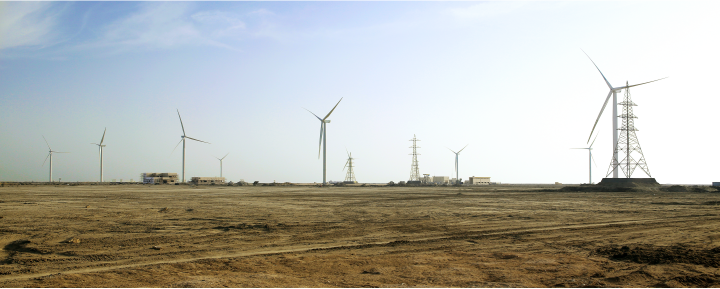Our CarbonNeutral® Commitments for 2021
Environmental commitments are nothing new to us at Shred Station. Since our formation, our focus has always been on offering secure services while also safeguarding the environment around us. We have a huge number of previous and ongoing eco commitments and have been CarbonNeutral® certified since 2019. This year is no different.
Our CarbonNeutral® commitments for 2021 involve offsetting through two wind power projects in China and India, two of the biggest polluting countries in the world. You can read a little more information about each project below.
The Gobi Wind Power Project
Located on the edge of the Gobi Desert, this wind power project delivers zero-emissions renewable electricity to the North China Power Grid. The wind farm is a large site, with 200 turbines generating 800+ GWh of clean, renewable electricity each year.
In addition to delivering emissions reductions to help take urgent action to combat climate change, the project also has the potential to deliver several other benefits. These benefits include the creation of jobs in the regions, contributions to the local economy, and providing clean energy to a region heavily dependent on coal.
The West India Wind Power Project
Located across three districts, Jaisalmer, Rajkot and Surendranagar, this project consists of 242 wind turbines with a combined capacity of over 190 MW. The project produces around 375,000 MWh of clean, renewably energy to India’s national grid each year. This displaces electricity that would otherwise be drawn primarily from fossil fuel power stations. India is one of the biggest polluters in the world. Carbon finance like ours supports India’s green growth target of 175 GW installed renewable energy capacity by 2022. But that’s not the only positive thing about this project.
The 2030 Agenda for Sustainable Development is a blueprint for safeguarding the planet, developed and adopted by the United Nations. At the heart of this blueprint are 17 Sustainable Development Goals. This project supports four of those Sustainable Development Goals. These are as below:
Goal 7 – Affordable and Clean Energy. This project displaces electricity that would otherwise be drawn from non-renewable resources.
Goal 8 – Decent Work and Economic Growth. Approximately 75 employees are currently working in full-time operational roles across the three districts, with another 45 in field security roles. While the wind farms were under construction, over 270 temporary jobs were created in construction, power infrastructure and commissioning. These were all in districts where around a fifth of the population lives below the poverty line.
Goal 9 – Industry, Innovation and Infrastructure. India suffers from severe electricity shortages, particularly in peak hours. This is partly due to the rapid population growth. In peak times, these shortages can last from a few hours to even days in some areas. This project helps to reduce the demand-supply gap in energy infrastructure.
Goal 13 – Climate Action. This project assists with the urgent actions needed to combat climate change and the resulting impacts of climate change.
This is the second year running we’ve supported this project and are proud to play a part in financing India’s green energy drive.

Pictured above: Sindh Wind Farm, part of the West India Wind Project, courtesy of Natural Capital Partners.
Why offsetting is so important
When people think of carbon emissions, it can be hard to visualise exactly what one tonne of carbon looks like. For too long, this has given companies an excuse to distance themselves from the reality that their actions are directly affecting the world around us. As we all know, this must stop for us all to stand a chance of long-term survival on planet earth.
To help our readers visualise one tonne of carbon, this is the equivalent of:
- Making 195,618 cups of tea. Spread over the course of a year, this would mean drinking a full cup of tea every 161 seconds.
- Charging 121,643 smartphones. Or, charging 333 smartphones once a day, every day for a year.
- Running a fridge/freezer for 8 years and 7 months. This is based on an A+ spec fridge/freezer using 270kWh of power per year.
- A lightbulb shining continuously for 2 years 7 and a half months. This is based on a standard 100W lightbulb.
While it’s impossible to eradicate carbon emissions completely, we can offset them to net-zero and beyond. You can view our CarbonNeutral® certificates on our accreditations page, detailing our total carbon offset amounts for this year.
What’s next?
As detailed in another of our recent blog posts, we have pledged to offset our emissions beyond net-zero for 2021. This means we will be sequestering more carbon from the atmosphere than we produce.
We all still have a long way to go to secure a safe future for our life on earth and protect our natural world. But there is still hope. We encourage all businesses, small and large, to consider their environmental impacts and make the necessary steps towards being a truly green business.
Sign up for our newsletter here to be alerted about new blog articles, data protection advice, and Shred Station news.
